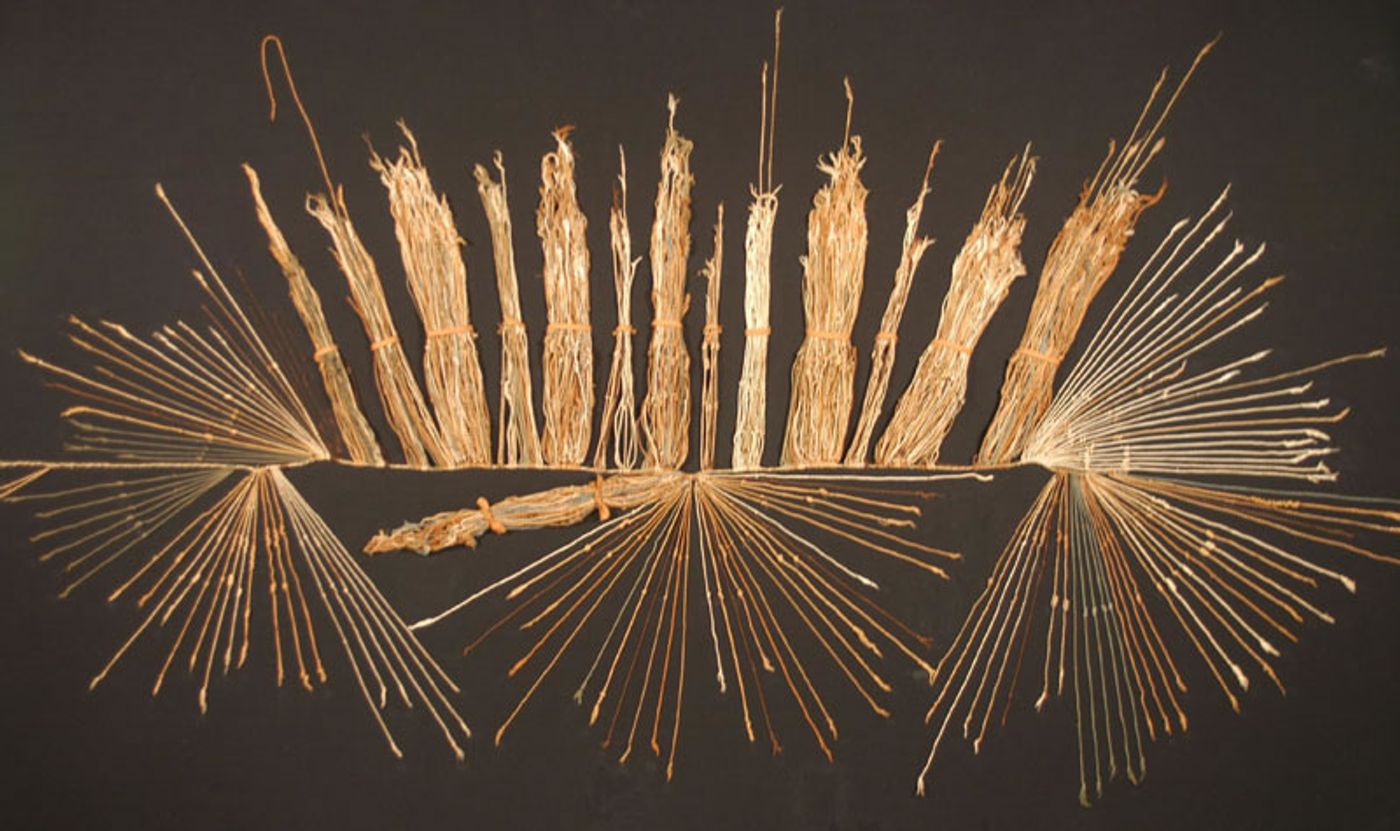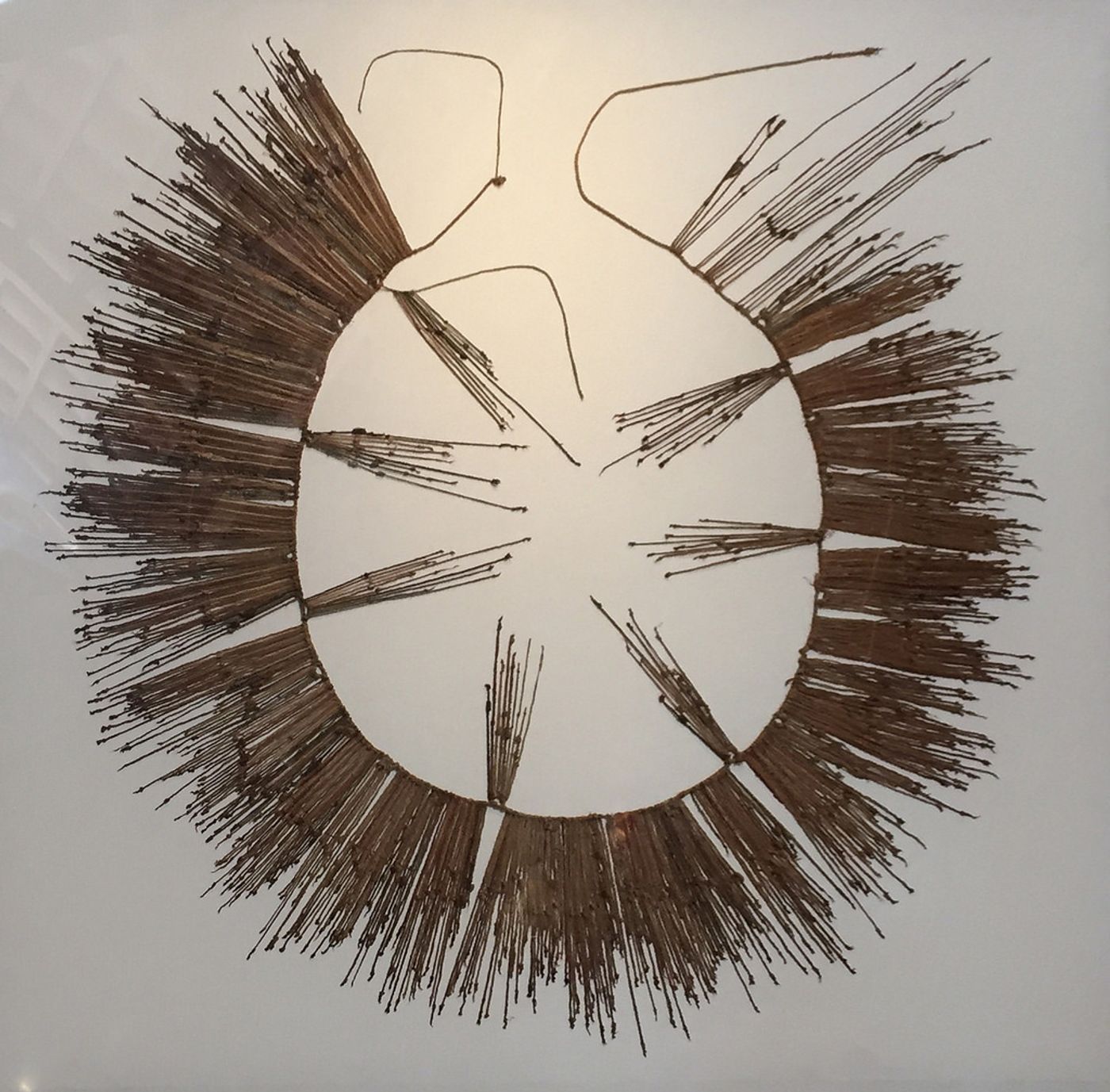Ancient Textile Tech: Inca Knots Decoded
The Inca Empire in Peru was an expansive and complex civilization that thrived in the pre-Columbian era between about 1400 and 1530. At the time of the Spanish conquistador’s arrival (Pizarro landed in 1532), it was believed to be the most advanced and widespread culture in the Americas. While much of what we know of the Incas is gleaned through the recollections and records of European travelers, invaders and colonists, a new study of the Inca’s khipu knots, knotted cords understood to be used for record keeping, lends new insight into this somewhat mysterious civilization and era.
“The only sources we have at present are chronicles of the Inca that were written by the Spaniards. We know in a lot of cases those histories were skewed by Spanish beliefs and Spanish motivations, and so we don’t really have any indigenous Inca history,” Harvard Professor of Pre-Columbian Studies Gary Urton says.
While the Inca left behind architectural marvels such as Machu Picchu, no written records remain that were authored within the culture. This has lent the knotted cords great archeological and anthropological significance. They have previously been understood to represent census data, calendars and commerce records. They contain various numbers of knots, lengths of rope, colors and other idiosyncrasies that are of fascination to scholars.
Urton has carried out an extensive survey of khipus and founded Harvard’s Khipu Database Project in 2002. He has recorded the details of more than 900 of the knotted cords from collections all over the globe. In 2016, he was lucky to teach freshman Manny Medrano, who is now a junior. Medrano developed an instant fascination with the khipus that turned out to be very fruitful.
“There’s something in me, I can’t explain where it came from, but I love the idea of digging around and trying to find secrets hidden from the past,” the young scholar says.
As a Mexican-American, Spanish-speaking Economics major, Medrano brought a unique and apt skill set to the study of the khipus. He was able to understand Spanish consensus information and analyze the khipu data that was organized into spreadsheets. Over spring break, he and Urton focused their exploration on one set of six cords from the 17th-century in Northwest Peru and census data from the same time and area.
Medrano’s love of puzzles, knack for synthesizing data and comfort with the Spanish language led him to discover new relevance in the knots – he deduced that the colors of the strings were related to individuals’ first names and that the type of knot at the top of the khipu correlated to social group or status. Medrano and Urton explored, fleshed out and refined these findings and will publish them in the journal Ethnohistory in 2018, with Medrano as the lead author. Katherine Davis-Young of Atlas Obscura points out this is an unusual accomplishment for an undergraduate.
University of St. Andrews Researcher Sabine Hyland specializes in Andean Anthropology and has great respect for this duo’s discovery in the realm of ancient textile tech:
“Manny has proven that the way in which pendant cords are tied to the top cord indicates which social group an individual belonged to. This is the first time anyone has shown that and it’s a big deal.”










